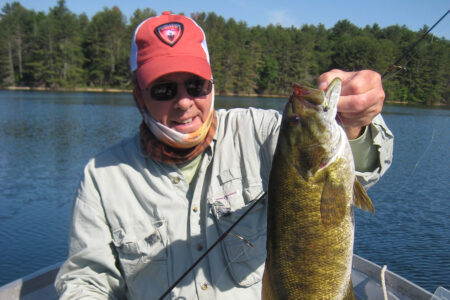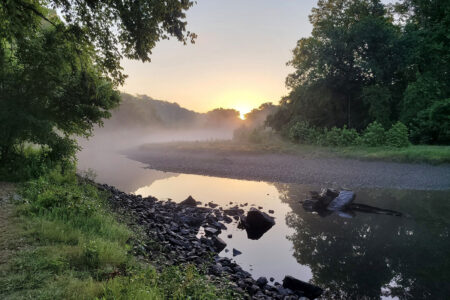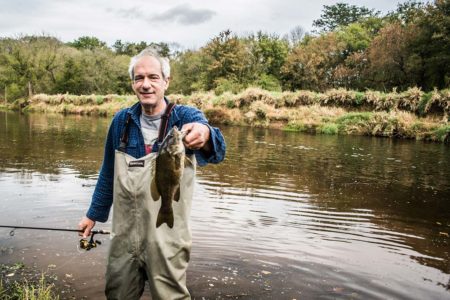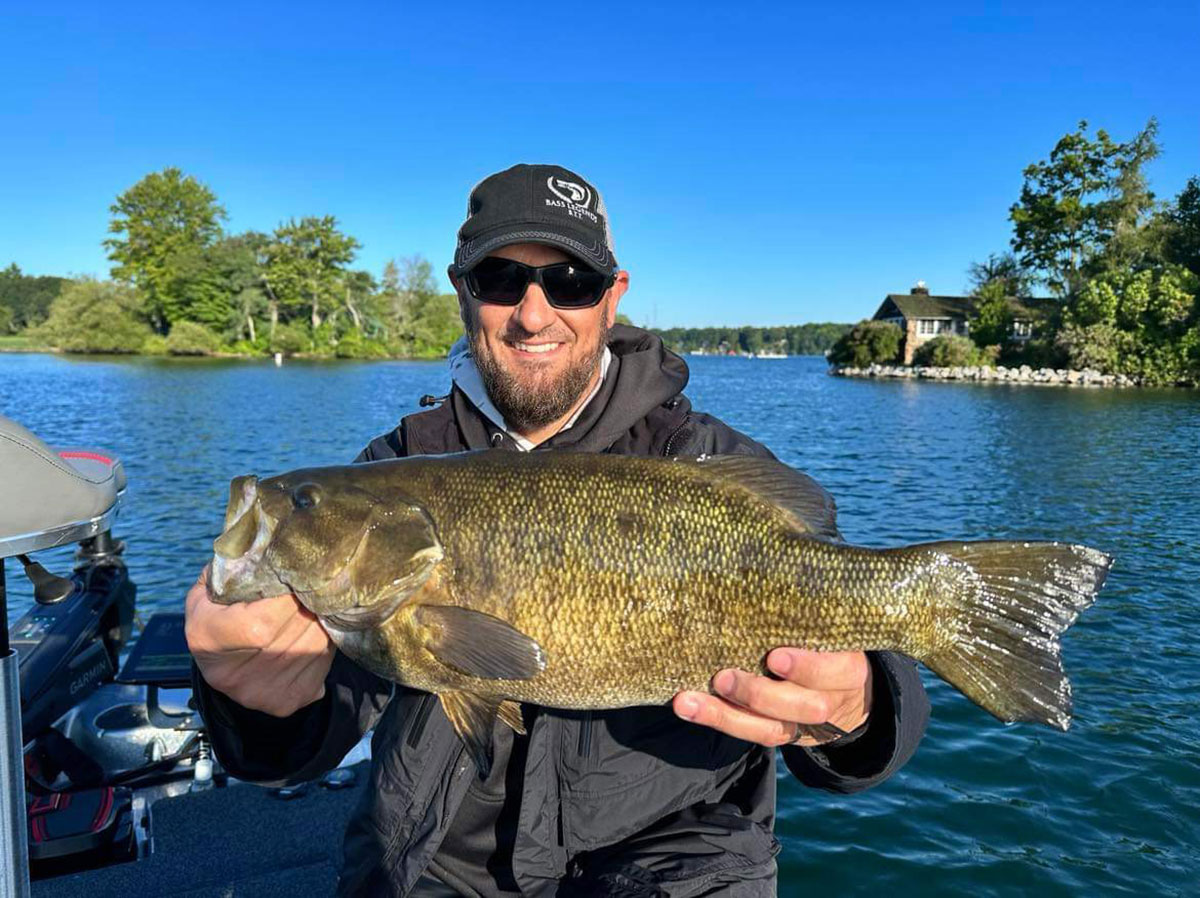
Smallie advice from a Pennsylvania “Bassmaster”.
Smallmouth bass have always been near and dear to my heart. In fact, I prefer them over their largemouth cousins for the challenge and their tenacity; they just seem to fight all the way to the boat!
While I have fished smallies most of my life, I wanted to get some tips from a local pro, so I reached out to a good friend of mine, tournament angler Nick Canestra. Nick is a founding member of “Bass Legends BTT” and member of Maryland TBF (The Bass Federation).
A 32-year tournament veteran, Nick recently fished the Bassmasters Team Championship at the Harris chain of lakes in Florida for a chance to make it to the Bassmaster Classic. Nick managed to finish in 27th place out of 250 teams from around the world.
I had the chance to sit with Nick as he shared some of his pro strategies for getting on some early trophy smallmouth. While spring can present itself with a variety of fishing conditions, Nick described what he likes to see for a good day out hunting smallmouth.
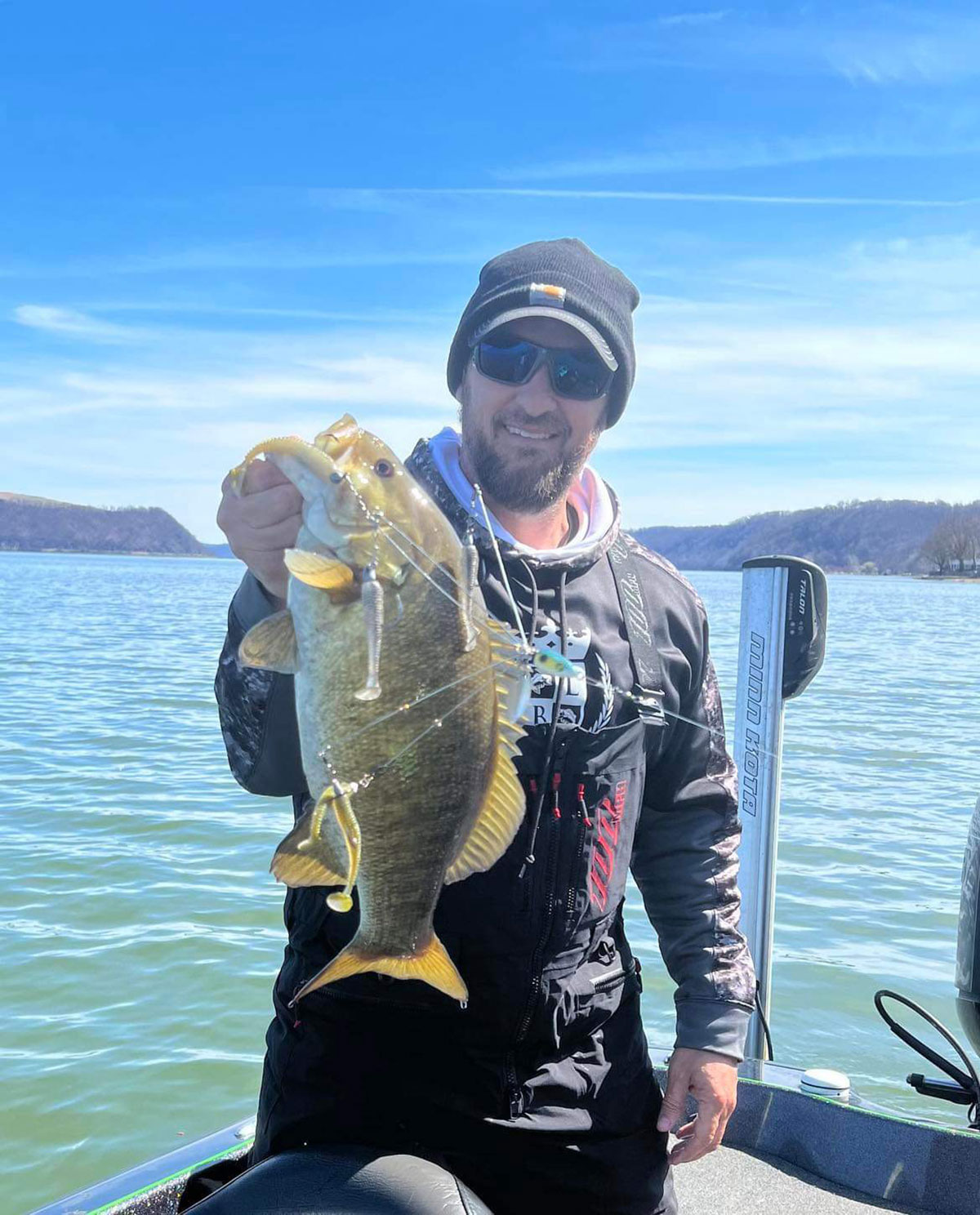
Sun Is Key
Early in the season when water temps are still on the chillier side, fish will look for the warmest water they can find. This can normally be found on the northern side of a body of water as sun will warm this area first. Look for rocky banks or points, someplace close to deep water. Nick says he prefers to fish in 8 to 12 feet of water exclusively. While many anglers look to find smallmouth in 20- to 30-foot depths, he feels fish in this shallow range are hungry and far more active than fish resting in deeper water.
Water clarity can also be a factor in the spring. Water that’s too clear can make fish wary and line shy, while muddy conditions after a spring rain and make it impossible to get a bite. Slightly stained water seems to be ideal. A minimal breeze to keep the water surface rippled is preferred over a flat calm day. Also a breeze from the south can help to warm those northern banks by pushing warmer surface water north.
Baits and tactics change as water temps increase throughout the spring. Nick shared his strategy for getting on a trophy, explaining that as conditions vary from one body of water to another, it’s important to have an open mind and be willing to change it up if the current presentation is not producing. Successful anglers must be flexible.
Keep an eye out and look for surface water temps over 40 degrees. In fact, Nick says he will not even fish smallmouth below this critical point. Fish will be just too lethargic to put any serious time on the water. But once waters are at 40 degrees, it’s game on for the season. Just remember, earlier in the season you need to take a slow deliberate approach when fishing this colder water. While more active than fish in deeper waters, they might not event chase fast moving baits. Nick suggests using something like a “blade bait” in silver, jigging it slowly across a rocky bank or point. Black hair jigs in 1/16- to 1/8-ounce are also great options.
Keep your presentation slow, and use short hops as you bring the bait through the rocks.
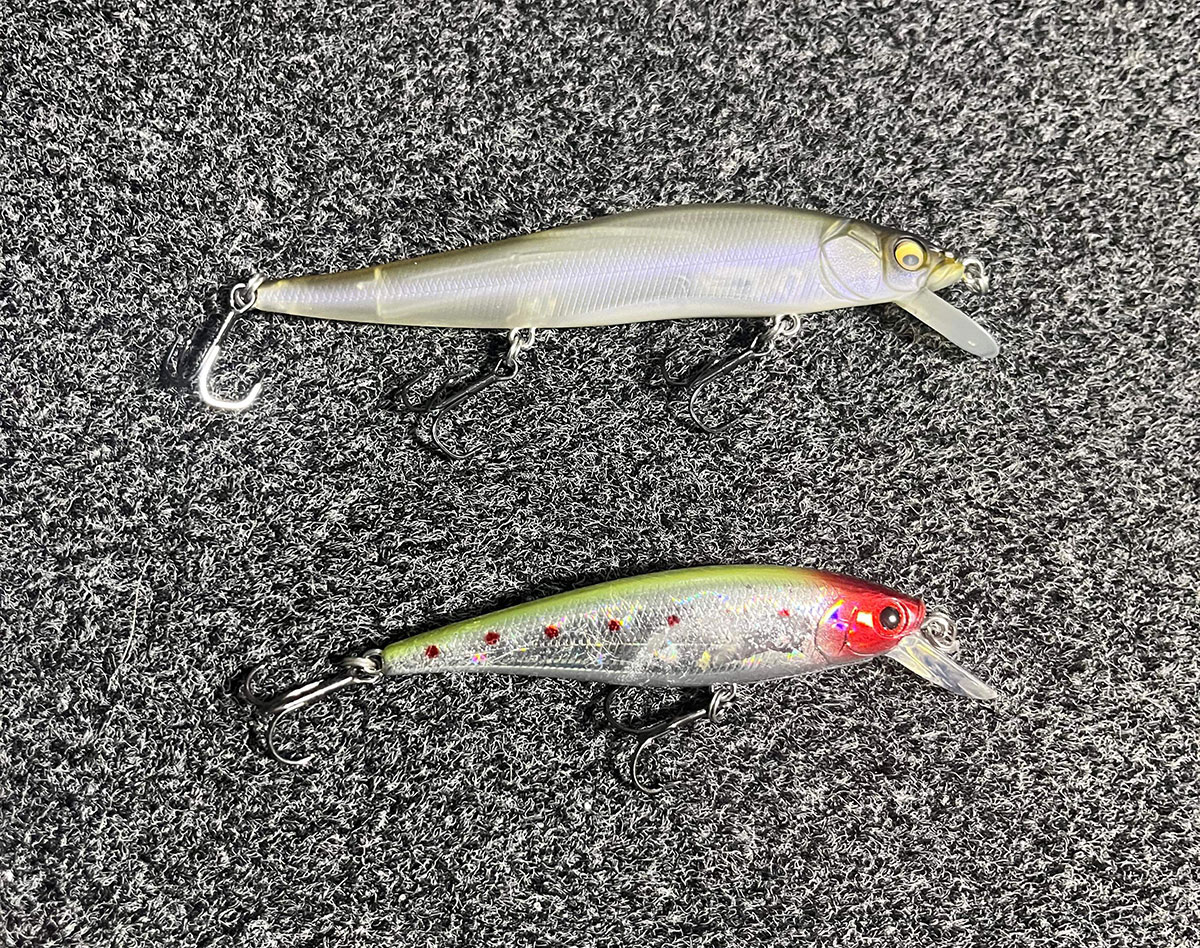
Temperature Gauge
As water temps steadily move up to the mid-40s, tactics can also change to a slightly quicker presentation. Nick will often switch up to a small jerkbait, something along the lines of a 3-inch LuckyCraft or 4-1/2-inch MegaBass jerkbait. Keep in mind, these still need to be worked with finesse when things are on the cool side. Use a very slow “jerk, jerk, pause – jerk, jerk, pause” retrieve; it is critical not to overwork the bait and find the cadence that draws the strike.
Anglers can get a bit more aggressive as water temps move up in the 50-degree range. Fish will become more active as they begin to feed heavy for the upcoming spawn. Longer daylight hours will also help to turn on a bite. Jerk baits up around 5 inches can be very effective. Solid colors like the “clown” pattern or translucent patterns in shad, perch, or bluegill can also excel this time of year. Don’t be afraid to give the bait a good initial “rip” before getting into the “jerk, jerk, pause” cadence. The erratic action will get the attention of the fish, while the retrieve will draw the strike.
Other effective presentations during the spring smallmouth season include the tube jig in green pumpkin (of course); Nick recommends a small, 1/4-ounce jighead. The lure can be slowly dragged or hopped along the points. A football jig and tail is also a good option. Again, allow to slowly drag along the bottom, with slow lifts to draw a strike.
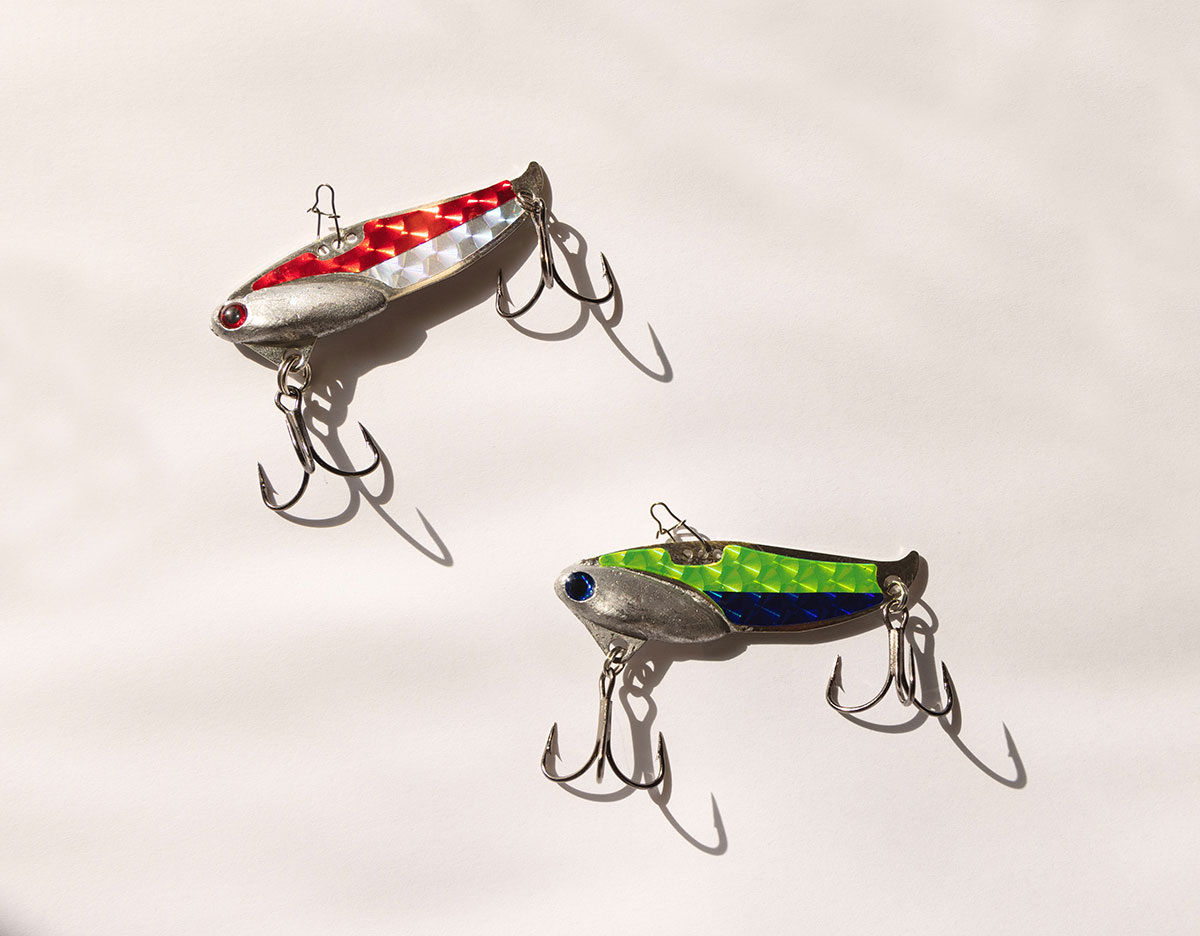
A-Rigs are usually thought of as a warmer water bait, but can be extremely effective this time of year if presented properly. Nick generally uses an A-Rig with a 1/8-ounce head and 2.8 or 3.3 Keitech swimbait. Many A-Rigs come with additional willow leaf spinners attached for more flash. Nick will often clip these for the early season, leaving fish to focus on the swimbaits in the clear spring waters. Use this bait in the same areas as discussed previously, targeting those more active fish in shallower water. If an A-Rig feels to be too much, a single swimbait can be used. Slightly larger Keitechs in the 4-inch range are ideal for this presentation.
Action heats up when water warms above 50 degrees, which is when Nick recommends more traditional bass baits; Chatterbaits in green pumpkin color, the versatile white spinnerbait with a willow leaf blade are good first choices. Crankbaits are also effective and fish tend to get even more aggressive. Flat sided baits and lipless crankbaits will be effective as well when fishing in less than 10 feet of water.
| BY BOAT |
| When working from boat, Nick Canestra recommends keeping parallel to bluffs and banks to keep your bait in the strike zone longer. Keep mental note of the conditions you had on the last strike. Define the pattern, lure color, location, depth that fish are hitting. Search for similar areas and explore using similar tactics. Look for bait, as the saying goes, “Find the bait, find the fish”. |
While these are some great strategies to get started on spring smallmouth, conditions change daily; color, presentation, depth will also change as days become cloudy, breezy, or cooler. Build on these tactics, learn and adapt to the changing environment. And don’t be afraid to switch up to live bait if conditions are difficult. Cold fronts and nasty weather can make artificials non-productive. Fish will often go deep in these situations.
A good friend of mine once said “It’s easier to feed them than to fool them” meaning sometimes bait is the best option over artificial lures in tough conditions. Build confidence in your presentation and success will follow in short order. Early season success can set the tone for the coming year.
Go get on ‘em!
